To drain coolant from the engine block, locate the drain plug, place a drain pan underneath, and unscrew the plug to let the coolant flow out. When it comes to performing maintenance on your vehicle’s cooling system, it is important to know how to properly drain the coolant from the engine block.
Draining the coolant allows for the removal of old or contaminated fluid, ensuring that your engine stays cool and operates efficiently. In this guide, we will discuss the process of draining coolant from the engine block, providing you with the necessary steps to complete the task successfully.
By following these instructions, you can effectively remove the coolant and replace it with fresh fluid, maintaining the optimal functionality of your engine’s cooling system.
Preparing For The Coolant Drain
Looking to drain coolant from your engine block? Follow these simple steps for a successful coolant drain, ensuring the proper maintenance and longevity of your engine.
Gather The Necessary Tools And Equipment
To properly drain the coolant from your engine block, you will need a few tools and equipment. Gathering these items beforehand will make the process more efficient and ensure you have everything you need. Here are the items you will need:
- A drain pan: This will collect the coolant as it is being drained.
- A pair of gloves: Coolant contains chemicals that can be harmful to your skin, so it’s important to protect your hands.
- A wrench or pliers: This will be used to loosen and remove the radiator drain plug.
- A funnel: This will help you pour the new coolant back into the engine block.
- A coolant flush kit (optional): If you want to thoroughly clean your cooling system, a flush kit can be used to remove any built-up debris.
Park The Vehicle On A Flat Surface And Let The Engine Cool Down
Before starting the coolant drain process, it’s important to park your vehicle on a flat surface. This will ensure that the coolant drains properly and won’t create a mess. Additionally, it’s crucial to let the engine cool down completely. Working with a hot engine can be dangerous and may lead to burns. Allow the engine to cool for at least a few hours or overnight before proceeding with the coolant drain.
Locate The Radiator Drain Plug
To drain the coolant from the engine block, you will need to locate the radiator drain plug. The location of the drain plug can vary depending on the make and model of your vehicle, but it is typically located at the bottom of the radiator.
Look for a small valve or plug that can be turned counterclockwise to open. If you’re having trouble finding it, consult your vehicle’s owner manual or seek advice from a qualified mechanic.
Properly identifying the drain plug is essential to ensure a smooth coolant drain process. By following these steps, you can prepare yourself for a successful coolant drain from the engine block.
Gathering the necessary tools, parking the vehicle on a flat surface, and letting the engine cool down will set you up for a smooth and efficient draining process.
Remember to always prioritize safety, wear protective gloves, and consult your vehicle’s owner manual or seek professional guidance if needed.
Draining The Coolant
Draining the coolant from your engine block is an essential maintenance task that helps keep your engine running smoothly. Over time, coolant can accumulate debris and lose its effectiveness, so it’s crucial to remove the old coolant and replace it with fresh fluid. In this section, we will guide you through the process of draining the coolant, step by step.
Position A Container Under The Radiator Drain Plug
To begin the coolant draining process, you need to locate the radiator drain plug. Typically, this plug is situated at the bottom of the radiator. Place a suitable container, such as a drainage pan, under the drain plug to catch the coolant as it is released.
Unscrew The Radiator Drain Plug And Allow The Coolant To Drain Fully
Once you have positioned the container, carefully unscrew the radiator drain plug. You should be able to easily turn it counterclockwise using a wrench or pliers. As you remove the plug, the coolant will begin to flow out of the radiator and into the container below. Allow the coolant to drain fully before proceeding to the next step.
Locate The Engine Block Drain Plug
After completing the radiator drain, it’s time to locate the engine block drain plug. This plug is usually located on the side or bottom of the engine block. Consult your vehicle’s manual or online resources specific to your make and model to find the exact location of the engine block drain plug.
Place A Container Under The Engine Block Drain Plug
Once you have identified the engine block drain plug, position a container beneath it to catch the draining coolant. This container should be able to accommodate a significant amount of fluid, as the engine block contains a substantial amount of coolant.
Open The Engine Block Drain Plug And Let The Coolant Drain Completely
With the container in place, carefully open the engine block drain plug. Again, use the appropriate tool, such as a wrench, to turn the plug counterclockwise and release the coolant. Allow the coolant to drain completely from the engine block before proceeding with any further maintenance or coolant replacement.
Draining the coolant from the radiator and engine block is an essential step in maintaining the health and performance of your engine. By following these steps, you can ensure that the old coolant is entirely removed, making way for fresh fluid and optimal engine function.
Now that you have successfully drained the coolant, you can proceed to the next necessary maintenance task, which is refilling the system with clean coolant.
Flushing The System
Flushing the cooling system is an essential step when it comes to maintaining your engine’s performance and longevity. Over time, coolant can become contaminated with rust, scale, and other impurities that can hinder the cooling system’s efficiency.
Flushing the system not only removes these contaminants but also helps to prevent corrosion and prevent future issues. Here’s a step-by-step guide on how to flush your cooling system properly.
Close The Drain Plugs Securely
Before you begin the flushing process, it’s crucial to ensure that all drain plugs on the engine block are securely closed. These drain plugs are typically located on the bottom of the engine block and allow you to drain the coolant. Failing to close them properly can result in coolant leakage, leading to potential engine damage.
Mix A Coolant Flush Solution As Per Manufacturer’s Instructions
To effectively flush your cooling system, you’ll need to prepare a coolant flush solution. It’s important to follow the manufacturer’s instructions regarding the correct coolant-to-water ratio and the specific type of coolant to use. Mixing the solution accurately will ensure the optimal performance of the flush.
Pour The Coolant Flush Solution Into The Radiator
Next, locate the radiator cap, usually positioned on the top or side of the radiator. Carefully remove the cap and pour the coolant flush solution into the radiator. Take caution not to spill any solution onto the engine or surrounding components.
The coolant flush solution will circulate through the cooling system, effectively breaking down any deposits or contaminants that may have accumulated.
Start The Engine And Let It Run For A Specified Time
After pouring the coolant flush solution into the radiator, start your engine and let it run for the specified amount of time as advised by the manufacturer. This allows the solution to circulate through the cooling system, dislodging and flushing out any remaining deposits.
Running the engine also helps to ensure that the flush solution reaches all areas of the cooling system, including the engine block.
Turn Off The Engine And Let It Cool Down
Once the specified time has elapsed, turn off the engine and allow it to cool down. It’s essential to give the engine sufficient time to cool down, as working with a hot engine can be dangerous. Keep in mind that coolant can retain heat even after the engine is turned off, so exercise caution when handling any components.
In conclusion, flushing the cooling system is a vital maintenance task that helps to keep your engine running smoothly.
By following these step-by-step instructions and taking the necessary precautions, you can effectively remove contaminants and promote the optimal performance and longevity of your engine’s cooling system.
Refilling The Coolant
After draining the coolant from the engine block, it’s time to refill it with a fresh coolant mixture. Follow these steps to ensure a smooth and effective refill process:
Prepare The Correct Coolant Mixture
Before refilling, it’s essential to prepare the correct coolant mixture. This mixture typically consists of a 50/50 combination of coolant and distilled water. However, it’s important to refer to your vehicle’s manual or consult a professional for the exact coolant specifications.
Pour The Coolant Mixture Into The Radiator
Once you have the correct coolant mixture ready, locate the radiator cap and open it. Using a funnel to prevent spills, carefully pour the coolant mixture into the radiator until it reaches the recommended level. Take your time and avoid overfilling, as this can lead to unnecessary waste or potential engine damage.
Start The Engine And Let It Run To Circulate The Coolant
With the coolant mixture added, start your engine and let it run for several minutes. This allows the coolant to circulate throughout the engine and reach all necessary components. Keep an eye on the temperature gauge to ensure it remains within a safe range.
Check The Coolant Level And Top It Up If Necessary
After the initial circulation, turn off the engine and wait for it to cool down. Once cool, remove the radiator cap and check the coolant level. If necessary, top it up with more of the coolant mixture until it reaches the recommended level. Again, be cautious not to overfill.
Replace The Radiator Cap And Check For Any Leaks
After confirming the proper coolant level, firmly replace the radiator cap. Take a moment to inspect the area around the cap and radiator for any signs of leaks. If you notice any leaks, it’s crucial to address them promptly to avoid engine damage.
Proper Disposal Of Old Coolant
Learn how to properly drain coolant from your engine block to ensure the safe and efficient disposal of old coolant. Follow these step-by-step guidelines for an eco-friendly solution.
When it comes to maintaining your vehicle’s cooling system, draining and replacing the coolant is an important task. However, it is equally crucial to know how to properly dispose of the old coolant. Improper disposal can harm the environment and pose health hazards.
This section will walk you through the necessary steps for responsible disposal of old coolant.
Follow Local Regulations For Disposing Of Old Coolant
Before you begin the process of disposing of old coolant, it is essential to familiarize yourself with the local regulations. Each area may have specific guidelines or requirements for the proper disposal of hazardous waste such as coolant. Research on your local municipality’s regulations to ensure you comply with the established guidelines.
Never Pour Coolant Down The Drain Or Dispose Of It In The Trash
If you’re wondering how to get rid of old coolant, never pour it down the drain or dispose of it in the trash. Coolant contains harmful chemicals that can pollute water sources and harm wildlife if improperly disposed of. It is crucial to avoid any direct contact with the coolant and prevent it from entering the sewage system or ending up in a landfill.
Bring Old Coolant To A Recycling Center Or An Authorized Disposal Facility
Instead of pouring it down the drain, bring your old coolant to a recycling center or an authorized disposal facility. These facilities are equipped to handle and process hazardous waste properly. They have the expertise and resources to recycle or treat the coolant in an environmentally friendly manner.
Recycling centers and authorized disposal facilities ensure that the coolant is collected and treated in accordance with environmental regulations. This not only prevents potential pollution but also allows for the reclamation and reuse of valuable components within the coolant. Recycling centers can separate and purify the coolant, making it ready for future use.
To find the nearest recycling center or authorized disposal facility, check with your local waste management agency or search online for facilities in your area. They can provide you with the necessary instructions for the proper transport and disposal of your old coolant.
Remember, responsible disposal of old coolant is essential to protect the environment and safeguard the health of both humans and wildlife. Always follow proper procedures and never attempt to dispose of coolant in ways that could harm the ecosystem.
By doing so, you are not only fulfilling your role as a responsible vehicle owner but also contributing to the preservation of our planet.
Frequently Asked Questions For How To Drain Coolant From Engine Block
How Do You Drain Coolant From The Engine Block?
To drain coolant from the engine block, locate the drain plug on the bottom of the block. Place a container underneath to catch the coolant. Loosen the drain plug and allow the coolant to fully drain. Make sure the engine is cool before attempting this task.
Why Is It Important To Drain Coolant From The Engine Block?
Draining coolant from the engine block is important to remove any built-up debris or contaminants. This helps prevent engine damage and promotes optimal cooling system performance. Regular coolant changes also extend the life of engine components and ensure proper heat dissipation.
Can I Drain Coolant From The Engine Block Myself?
Yes, you can drain coolant from the engine block yourself. Use caution and follow the proper steps to avoid injury or damage to the engine. Having a drain pan, the correct tools, and knowing the location of the drain plug are necessary.
Always refer to your vehicle’s manual for specific instructions.
How Often Should Coolant Be Drained From The Engine Block?
Coolant should be drained from the engine block every two to three years or as recommended by the vehicle manufacturer. Regular coolant changes help maintain the cooling system’s efficiency and prevent corrosion or blockages. Be sure to consult your vehicle’s manual for the recommended maintenance schedule.
Conclusion
Draining the coolant from the engine block is a crucial maintenance task for any vehicle owner. By following the step-by-step instructions provided in this blog post, you can ensure that your engine stays cool and properly maintained. Remember to take the necessary safety precautions and dispose of the coolant properly.
With a little time and effort, you can effectively drain the coolant and keep your engine running smoothly for years to come.

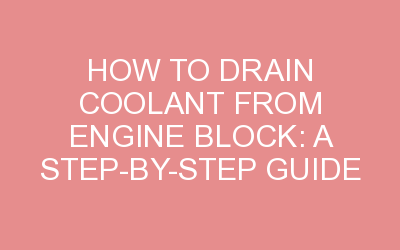
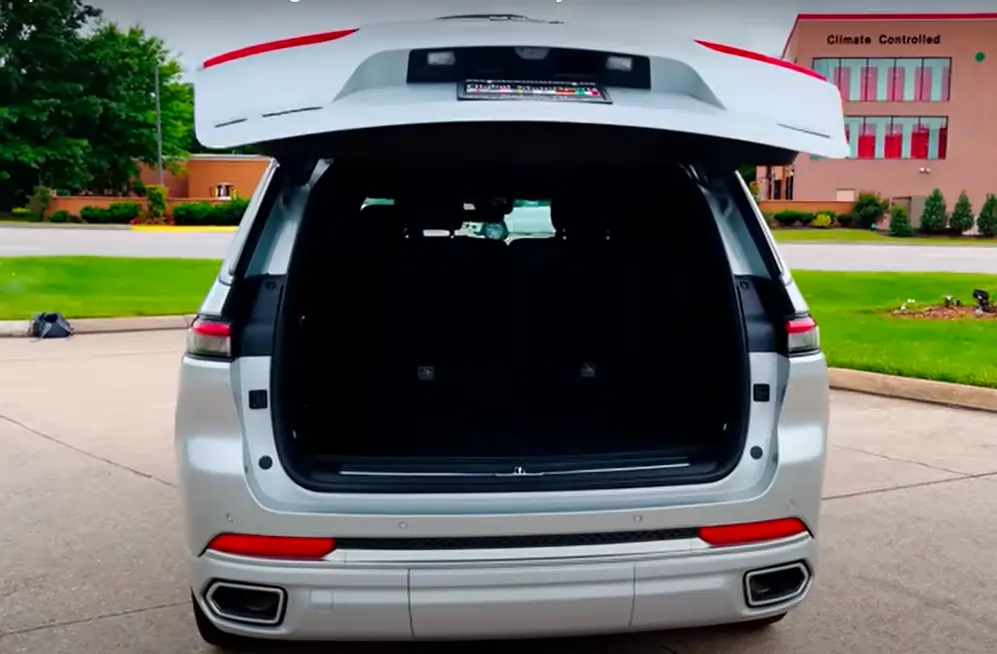


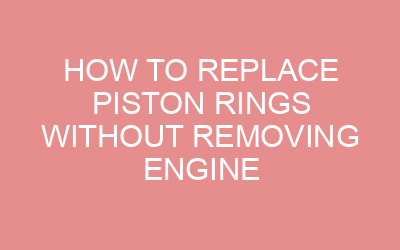


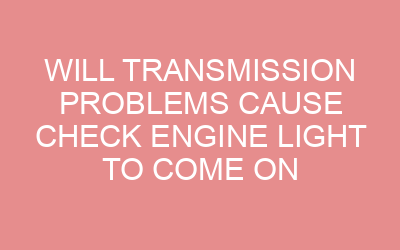
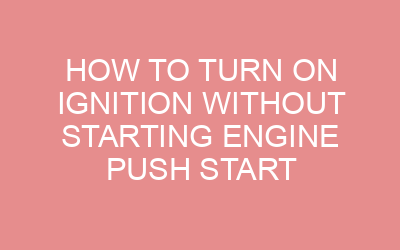




Leave a Reply